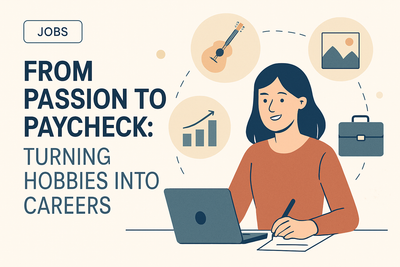Creative Teaching Methods That Engage and Inspire Students

Creative Teaching Methods That Engage and Inspire Students
In the evolving landscape of education, one thing remains constant: the need to keep students engaged and inspired. Traditional lectures and rote memorization are no longer sufficient to prepare learners for the complexities of the modern world. Today’s educators must employ creative teaching methods that not only convey knowledge but also spark curiosity, encourage collaboration, and make learning truly enjoyable.
Why Student Engagement Matters
Student engagement is directly linked to academic success. When students are actively involved in their learning, they're more likely to retain information, develop critical thinking skills, and stay motivated. Engaged students participate in discussions, seek out new knowledge independently, and experience deeper satisfaction with their education. Creative education strategies are key to unlocking this level of participation.
1. Project-Based Learning (PBL)
Project-Based Learning is a dynamic classroom approach where students explore real-world problems and challenges. Instead of passively receiving information, learners collaborate to create presentations, prototypes, or reports that solve a meaningful question.
Benefits of PBL:
- Encourages collaboration and communication
- Improves problem-solving and research skills
- Connects learning to real-life contexts
For example, a science teacher might task students with designing a sustainable city model, combining environmental science, math, and social studies into a single, engaging project.
2. Gamification of Lessons
Gamification incorporates game elements—like points, levels, challenges, and rewards—into the learning process. By turning lessons into games, teachers tap into students' natural desire for competition and achievement.
Examples include:
- Educational escape rooms
- Digital quiz platforms (like Kahoot! and Quizizz)
- Classroom leaderboards
This method fosters a fun, interactive learning environment that encourages participation from even the most reluctant learners.
3. Flipped Classrooms
A flipped classroom reverses the traditional teaching model. Students review lecture content at home through videos or reading materials, and class time is used for collaborative activities, discussions, and hands-on practice.
Advantages:
- Allows more personalized instruction during class
- Promotes active learning and peer interaction
- Supports differentiated learning styles
With this approach, teachers act more as facilitators than lecturers, guiding students through deeper exploration.
4. Visual and Performing Arts Integration
Integrating arts into the curriculum isn’t just for creative subjects—it enhances all areas of learning. Whether it's writing a song about the water cycle or performing a skit on historical events, using the arts helps students internalize concepts in memorable ways.
Why it works:
- Activates multiple areas of the brain
- Builds emotional connections to content
- Encourages self-expression and confidence
Art-infused education makes lessons more vivid and personal, increasing long-term retention.
5. Technology-Enhanced Learning
Incorporating technology doesn't just mean using devices—it’s about leveraging digital tools to enrich the learning experience.
Popular tools include:
- Virtual reality (VR) for immersive experiences
- Interactive simulations and educational apps
- Online discussion boards and collaborative platforms
Technology allows for more personalized, flexible, and engaging educational experiences, especially for digital-native students.
Conclusion: Inspiring Lifelong Learners
Creative teaching methods are not just about novelty—they are powerful tools for increasing student engagement, deepening understanding, and fostering a lifelong love of learning. By embracing innovative strategies like project-based learning, gamification, and arts integration, educators can transform their classrooms into vibrant spaces of exploration and growth.
Whether you're a seasoned teacher or new to the profession, experimenting with new approaches can reinvigorate your teaching and inspire your students to reach their full potential.
Ready to innovate?
Start small—try a game-based review session or flip your next lesson. The journey toward a more engaging classroom begins with a single creative step.





